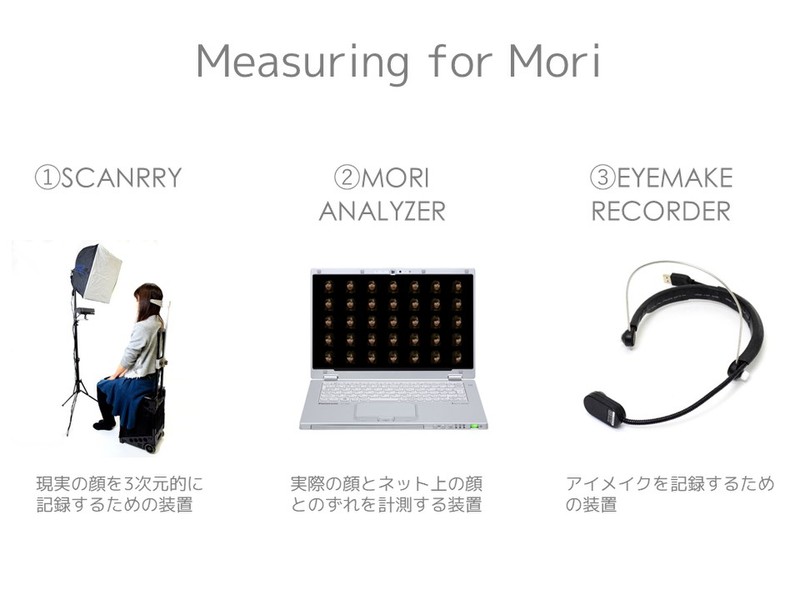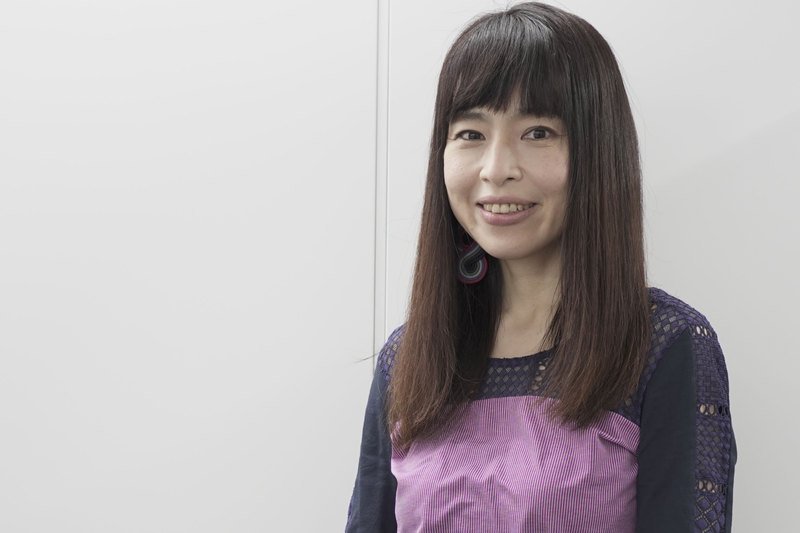Interviews

Cinderella Technology – Understanding Mori
Yuka Kubo
Mathematically evaluating facial beauty in the eye of engineering
Interviewer & Japanese Writer: Yamamoto Takaya; Translation & Editing: Matthew Cherry
Why did you choose the theme of explaining the power of “mori” through an engineering perspective?
I wanted to see if I could explain Japanese people’s sense of beauty using mathematics, so when I was in graduate school I became involved in Bijinga (term for pictures of beautiful women in Japanese art, traditionally in woodblock printing). From the paintings of women on the walls of Takamatsuzuka Tomb (700-800) to the Bijinga of the Taisho Period (1912-1926), women’s faces were always painted with some type of deformation. So I began conducting research that involved indexing rules for measuring the Bijinga and producing mathematical formulae for the deformation. While I was conducting this research, I started to wonder if the same deformation effects on the Bijinga could be captured by making girls’ eyes bigger through the application of makeup and image manipulation.
That’s an interesting way of looking at it, isn’t it?
Girls in Japan began to call this sort of deformation “mori,” so my research was into mori from an engineering perspective. At the start of my research, I was using pictures I found on the internet for measuring samples, but once I started doing field research I asked people directly why they wanted to apply this sort of deformation to their photos. To my surprise, the main answer I received was “to be more like myself.” The girls that were editing their photos saw their distorted selves as one and the same, and the numbers I got from my measurements yielded similar results. Yet slight variations in data would appear when things like fake eyelashes were applied. I believe a form of communication lies deep within these variations. Measuring the length and density of eyelashes required separate equipment and also carried with it quite the cost, so I decided to apply for the INNO-vation Program.
And how did it go from there?
First I came up with a method to properly measure faces, but that in itself took up quite a bit of time.
I started by measuring the gap that exists between one’s real identity, or unaltered face, with one’s virtual identity, or an image with applied makeup and deformation uploaded to social media. Developing the equipment, creating the metrics, and measuring the faces all went very well.
Through research I had conducted in the past, I discovered that the eyes, particularly large eyes are incredibly important in determining mori. From there I developed equipment that could measure very subtle differences in the eyes which I then used in my research.
There was a time, however, when I was speaking with someone whose face I was measuring, and she told me “big eyes aren’t cool anymore. I don’t even really take selfies these days, mostly just pictures of other things.” I was in the INNO-vation Program in 2015, so that was right about the time that smartphones and Instagram became popular in Japan. While I was working incredibly hard on the technology to measure mori, the trend had started to move away from faces. People were taking fewer pictures of themselves, and the concept of mori was starting to be applied more to scenery than it was to faces. At the time, I didn’t realize this was happening. I found out that even if I were to measure the eyes more in-depth, there would hardly be any meaning to it.

In order to take 3D scans of faces, I decided to use Microsoft’s Kinect. After creating a 3D model, I used a computer and the same calculation requirements to measure the gap between the three-dimensional model and an altered mori picture.
The challenge veered off course from your original intention.
Honestly, I thought it was a terrible situation, but I am who I am today because of that failure. I tried to take a concept like mori and create a criterion to measure it universally, however, I learned that mori isn’t something that should be viewed as fixed or universal. It’s a constantly changing concept. I’ve since moved on to learning about how to perceive and understand ongoing trends.
You found a new direction as a result of your failure.
Exactly. Truth is, while I was in graduate school my research wasn’t taken seriously by others. But the INNO-vation Program encourages imaginative playfulness and even goes so far as to commend it. Something as strange as my research into mori was well-received. Although I didn’t end up reaching my intended goal, I was able to present my research, it ended up gaining social recognition, and I was able to publish a book about mori as well. This was all thanks to the INNO-vation Program.
Since these are all things that actually happened to me, I have faith that anyone out there with an idea that hasn’t been well-received may just get the recognition they’ve been looking for from the program. For those who have their own challenge they want to take on but are worried about funding or other aspects, I highly encourage them to apply.

Yuko Kubo’s Profile

